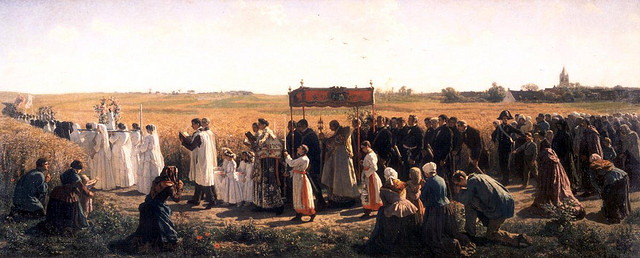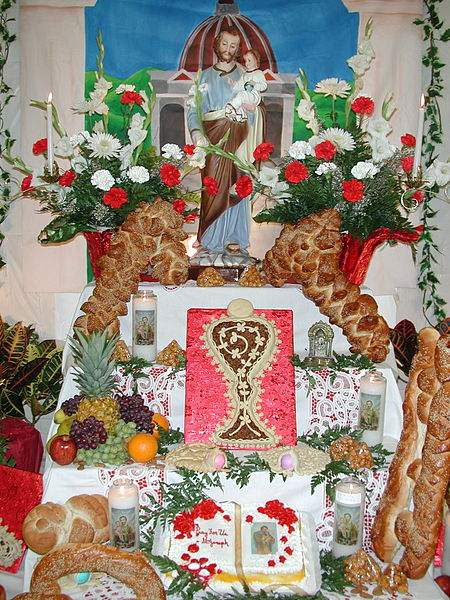The economic implications of this spirit were particularly reflected in a “Way of the Cross” economy, where the need for sacrifice and restraint in supplying human needs coincided with the consuming ideal of seeking the Cross of Christ. Medieval man looked for ways to offer up his sacrifices in the economic dealings of every day.

One immediate manner of doing this was by offering to God the best fruits of one’s labor. The farmer, for example, planted his wheat thinking that his best grains might be turned into hosts for the Consecration. The vintner saw his wine being used for Mass as the highest honor. Builders gave their best to build magnificent churches to house Our Lord. Fine linens and silks adorned the altars. Members of the ancient guild of joiners and cabinetmakers under the patronage of Saint Anne “looked upon the making of tabernacles wherein God may dwell in our churches as their most choice work.”* The first and best apple of an orchard might be put in the hand of the Virgin statue at the village church as a symbolic gesture of this sacrifice.
In this way, man “immolated” as an offering the best products of his hands in the service of the God Who immolated Himself for us.
* Prosper Guéranger, The Liturgical Year, trans. Laurence Shepherd (Great Falls, Mont.: St. Bonaventure Publications, 2000), 13:192. If the Blessed Mother was the ciborium of Christ, Saint Anne was the tabernacle.
John Horvat II, Return to Order: From a Frenzied Economy to an Organic Christian Society—Where We’ve Been, How We Got Here, and Where We Need To Go (York, Penn.: York Press, 2013), 332.













